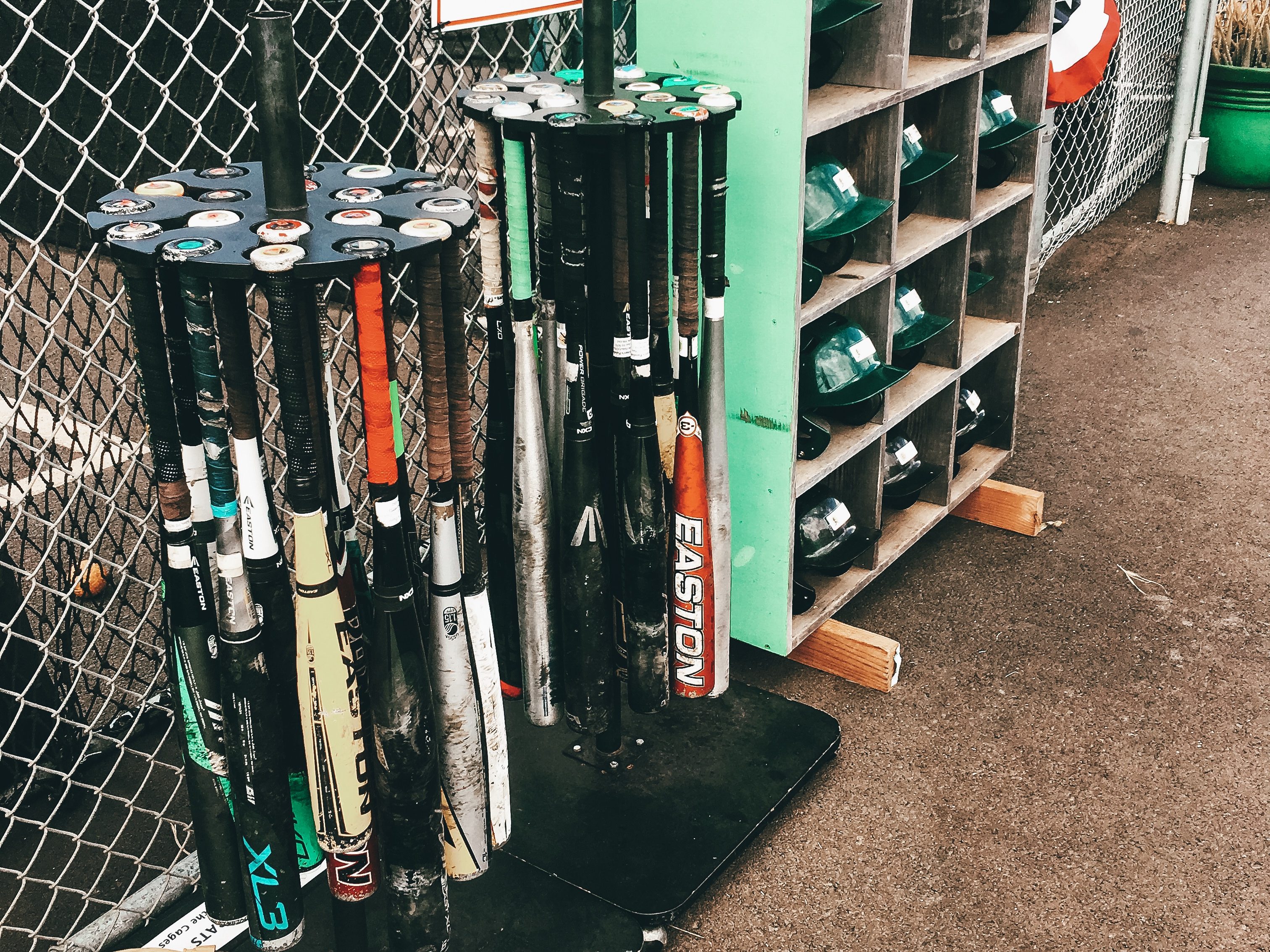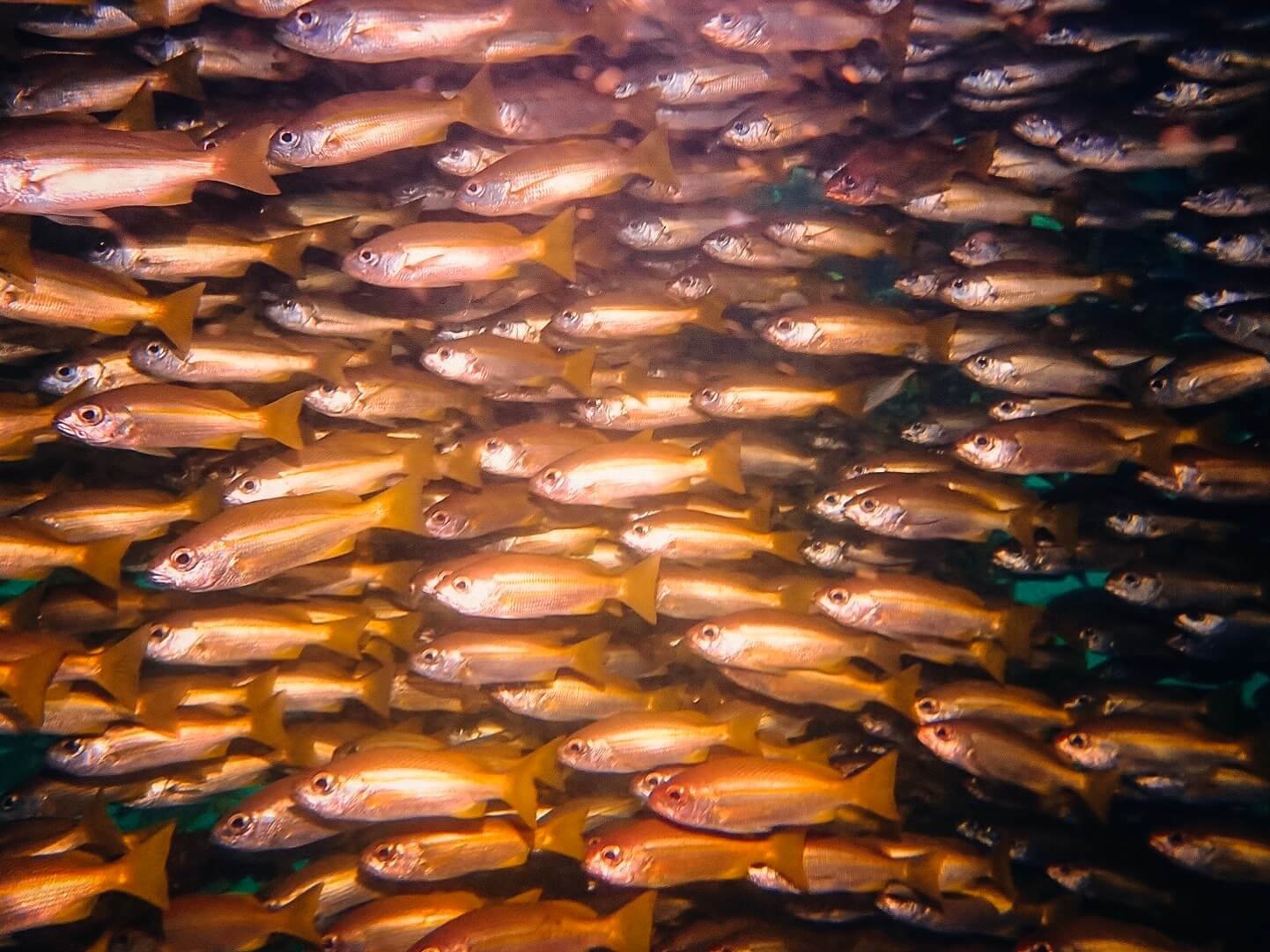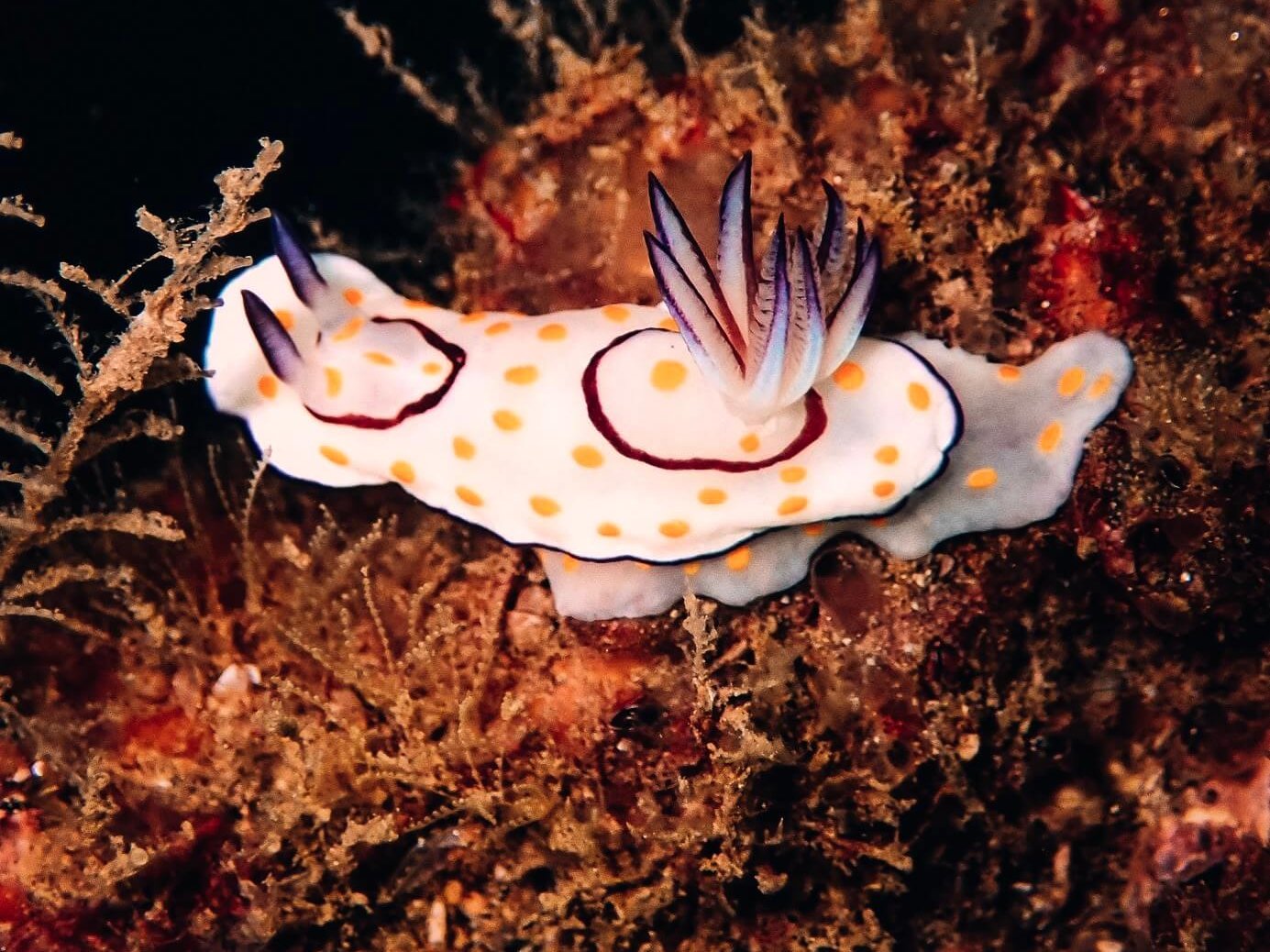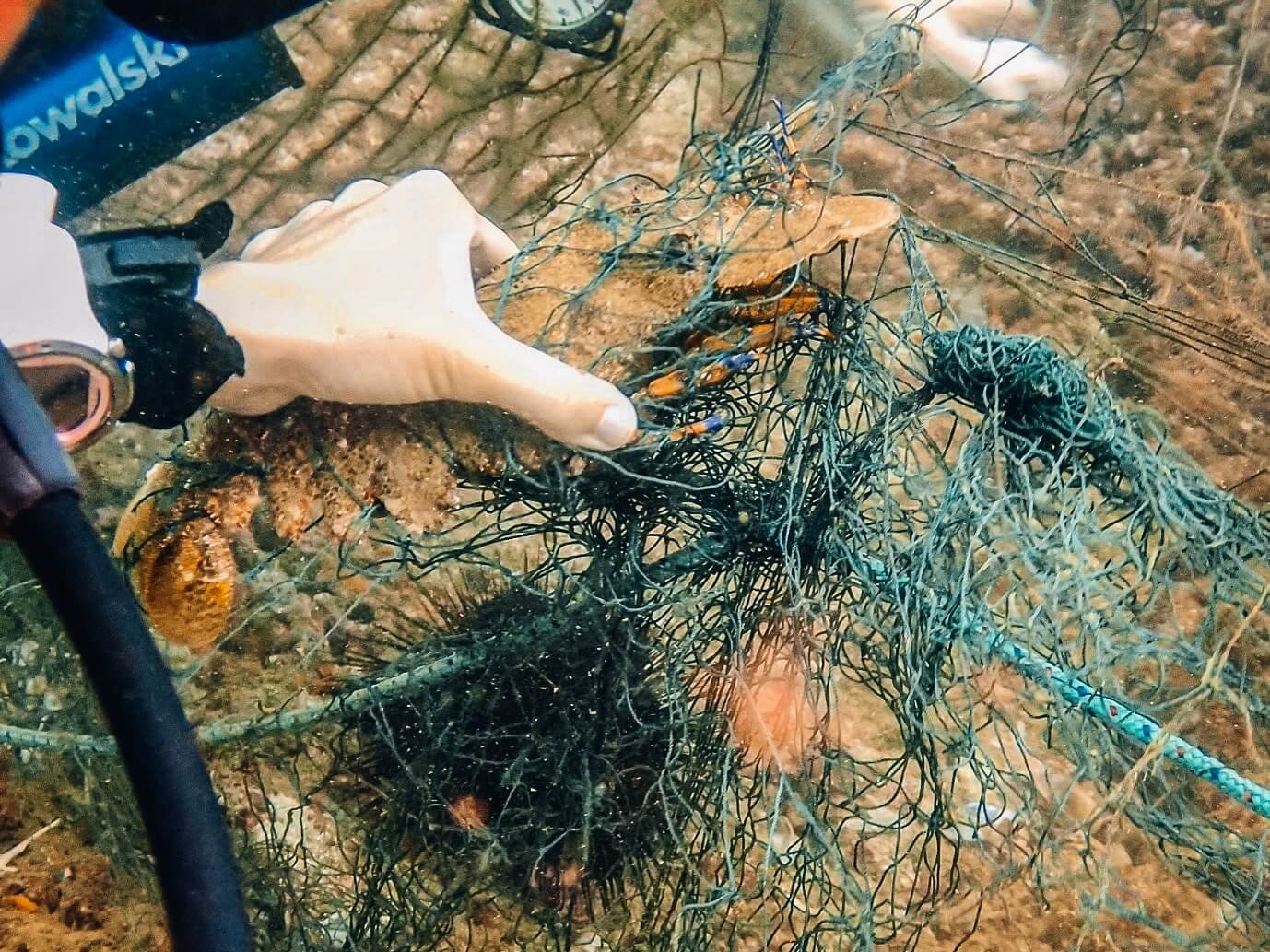On our very last day in Maui, Matt hooked us up with a friend who was able to get us onto her dive boat. We would have gone diving sooner, but a great swell had descended upon the islands, and the waters had been too rough for tour boats of any kind to go out. Matt had been out of work for the past week at least. But now the waters were finally calming down enough that our fears of the boat getting canceled were unfounded.
Fletch and I excitedly packed up our gear and made our way across the street to the pier. Captain Jen invited us aboard her boat with big Prodiver Maui letters spelled across the side. She was the quintessential island chic with long blonde hair and suntanned skin and a personality that told everyone they were in for a good time. Our divemaster was a crazy Hawaiian native who liked to give Jen a hard time over everything, but it was all in good humor. The two of them jokingly bickered like an old married couple with an entire repertoire of well-rehearsed jokes. They had the personalities you come to love in the dive industry, and I would highly recommend their shop just for the two of them alone, never mind the diving.
We made our way out to Molokini, a crater that is half submerged, making it look like a crescent moon shaped island from above. You’d never know it from the boat of course, but the birds-eye picture of it was plastered across every other postcard in the gift shops. Matt had told us that the visibility there was epic, even if the fish life was only so-so.
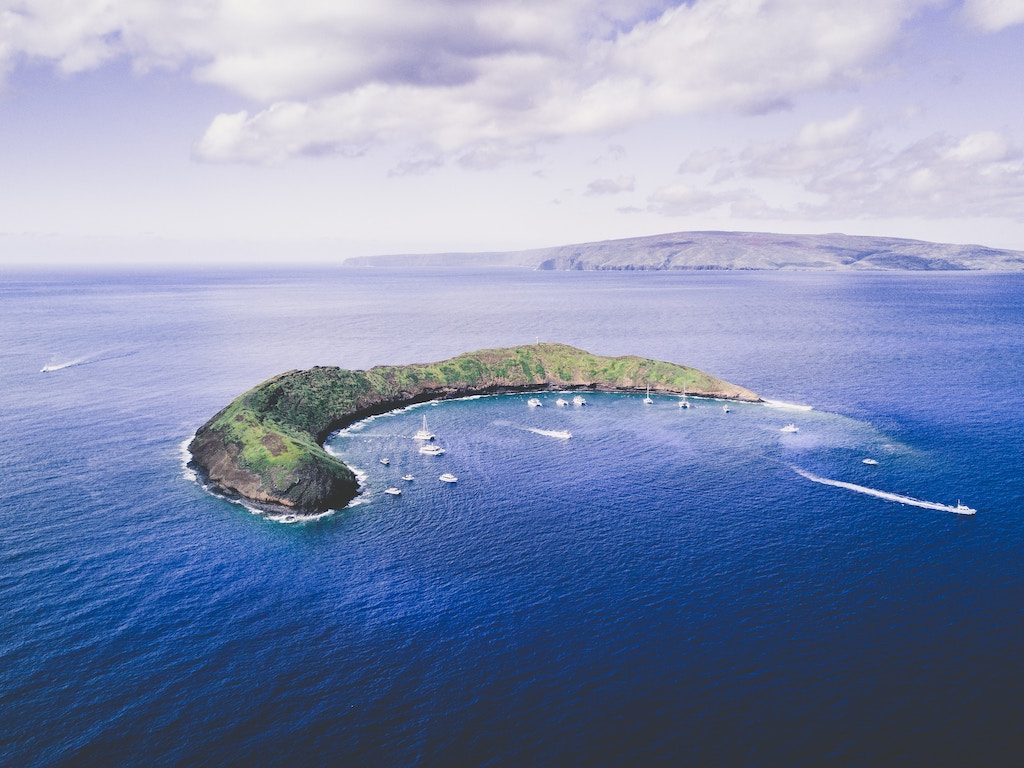
Our dive buddies included a dad and his teenage son, two younger guys, and a Chinese couple. Jen and the divemaster had a very methodical way of getting everyone into the water, which we respectfully waited our turn in line for. Upon seeing that we were waiting, Jen told us to feel free to just hop out the side exit. When diving on someone else’s boat, always follow protocol, no matter how much you think you know. Everyplace has a different way of doing things, oftentimes for safety reasons you are not aware of. That said, when staff return the favor and treat us like the pros that we are, they always go up a few points in my book.
Molokini was known for super visibility, and the visibility indeed was super. The corals had no color though, and the fish life was about equivalent to the north side of Roatan. I did entertain myself by finding fish species I wasn’t familiar with. There was a triggerfish with a vibrant yellow outline. A large silvery fish of some sort, swam straight towards me and then over to Fletch’s outstretched hand. That was a cool trick. The marine life doesn’t usually come that close voluntarily. The yellowfin surgeonfish were some of the largest I had ever seen. Usually they’re only about a foot long, but these had to be at least two. And then I found what looked to be a color variation of a barred filefish. The body was the typical blue-grey with bars, but instead of yellow fins and tail spines, they were a pretty shade of pink.
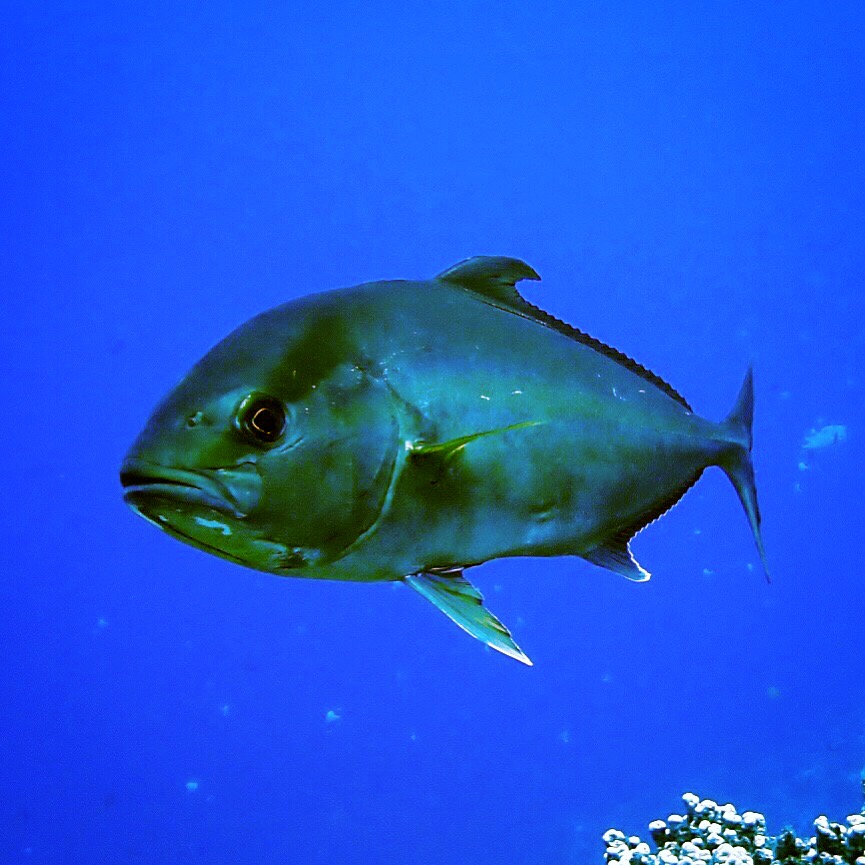
Almaco Jack 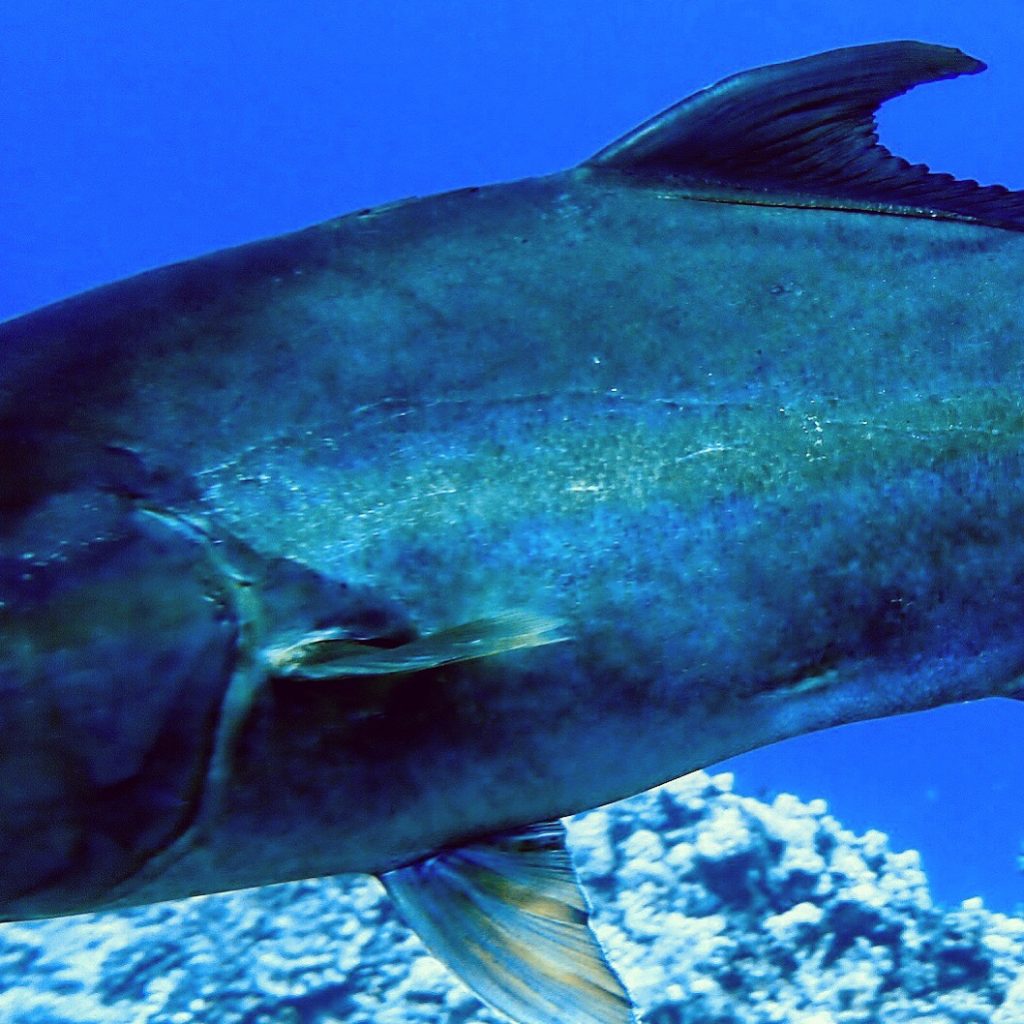
Closeup of almaco jack as it swam past. 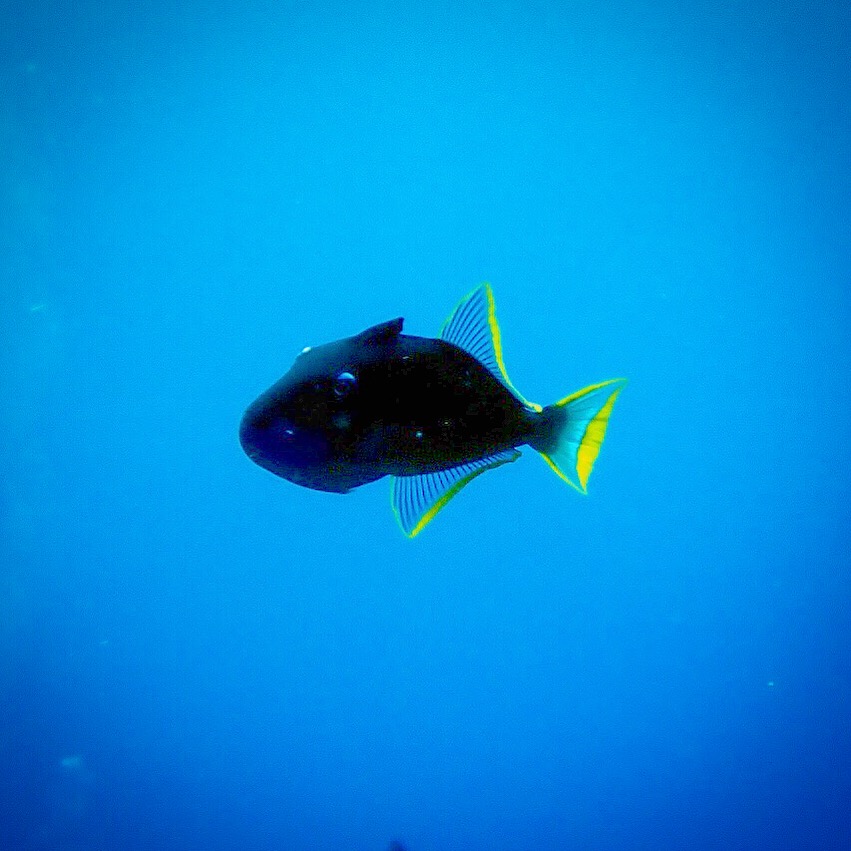
Gilded Triggerfish 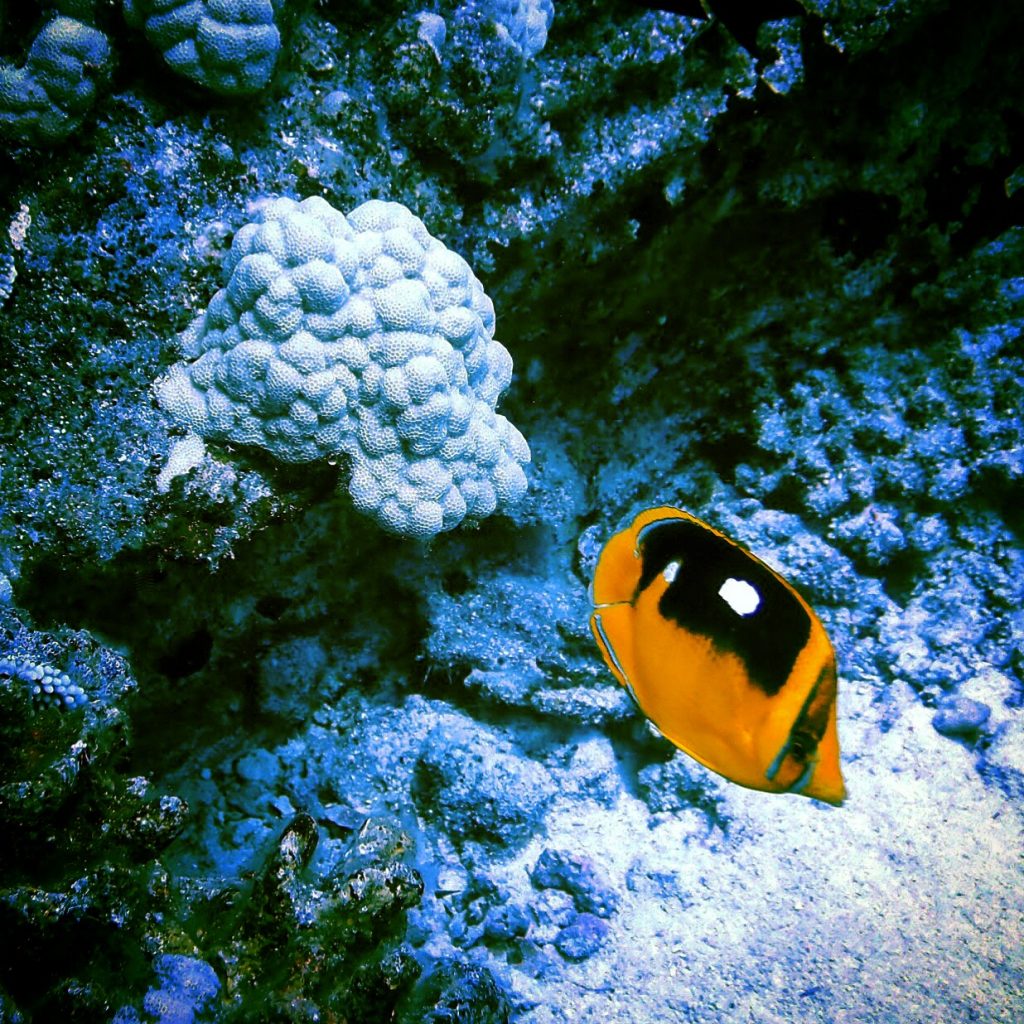
This fourspot butterflyfish always reminds me of an old boss in Fiji because he would get really excited to see these at one particular dive site. 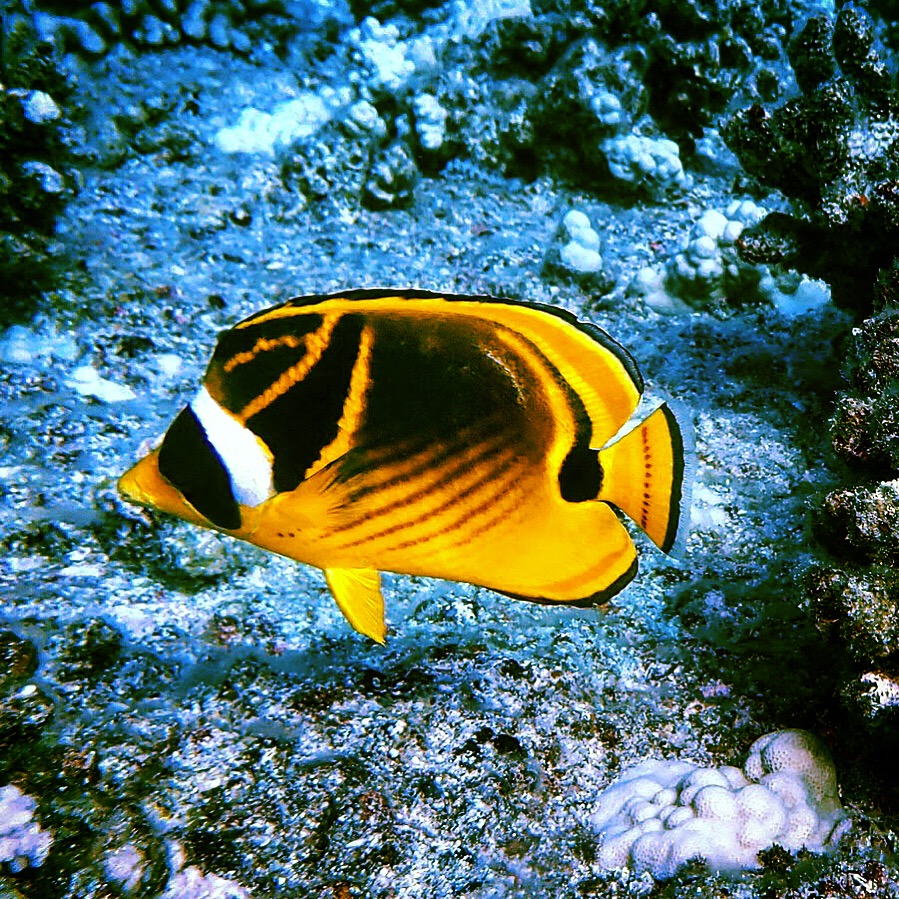
Not to be confused with my favorite butterflyfish, the raccoon butterflyfish. 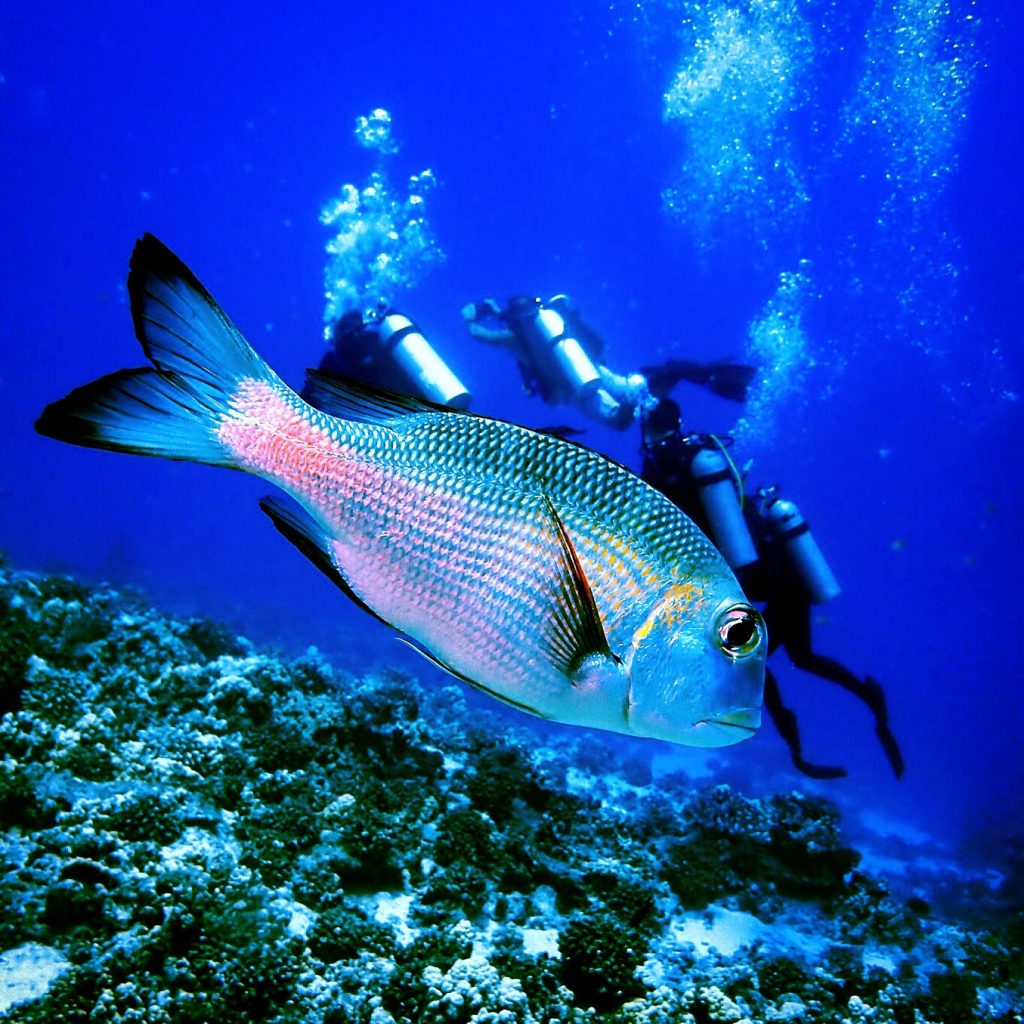
Humpnose Bigeye Bream 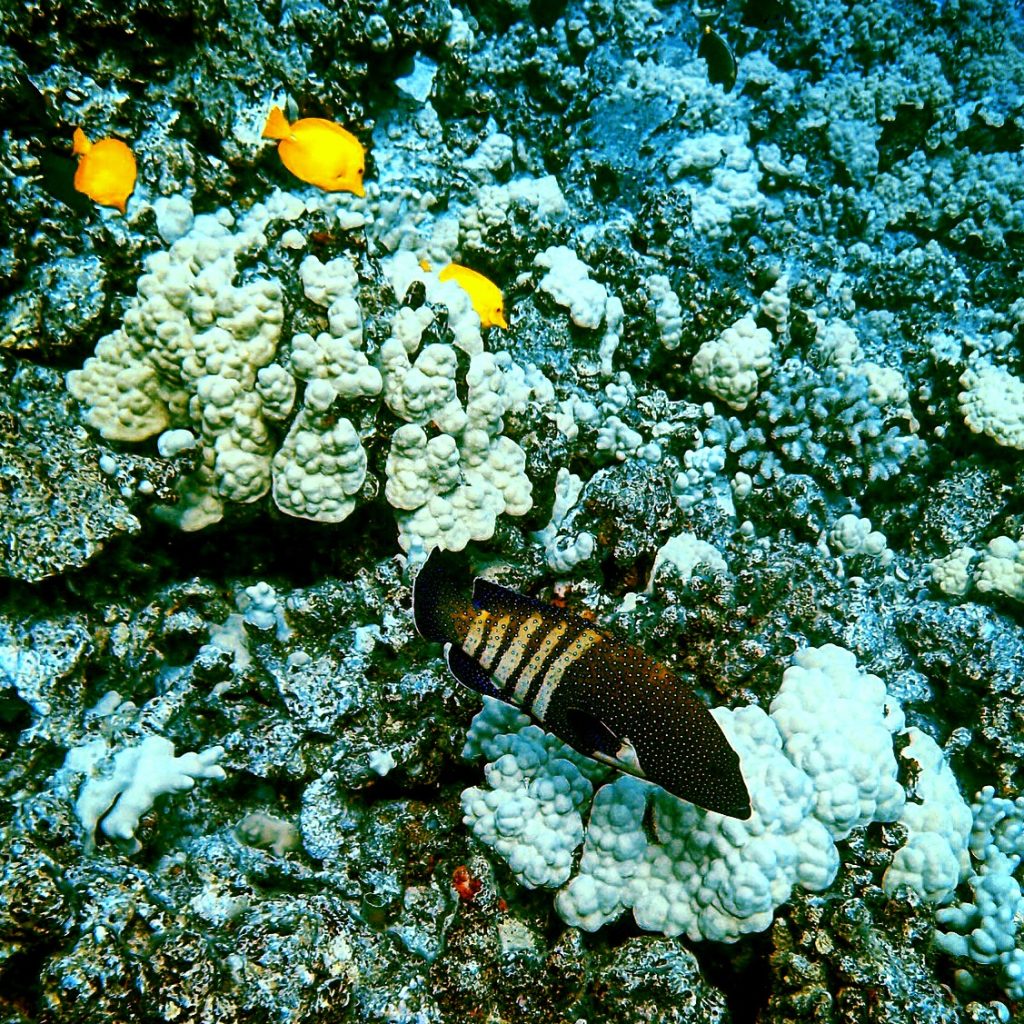
Peacock Grouper 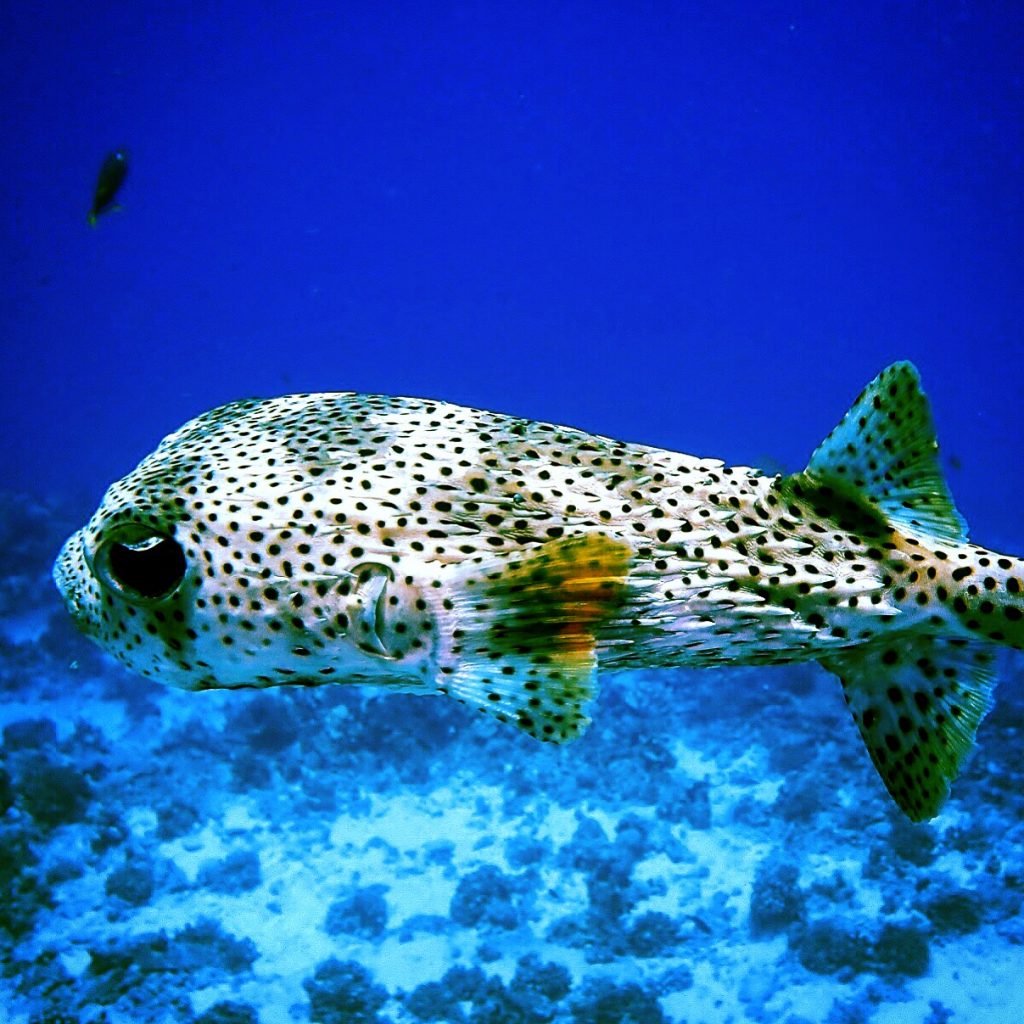
Porcupinefish 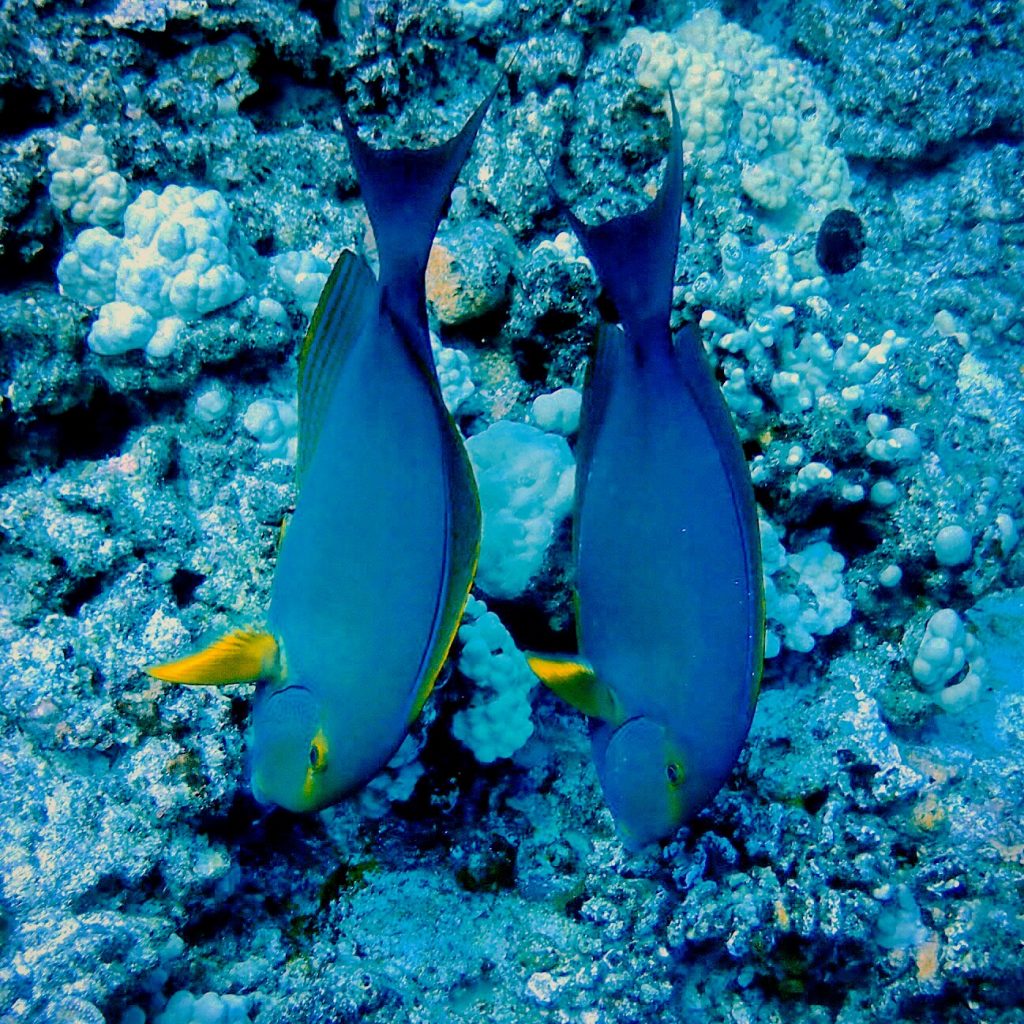
Yellowfin Surgeonfish 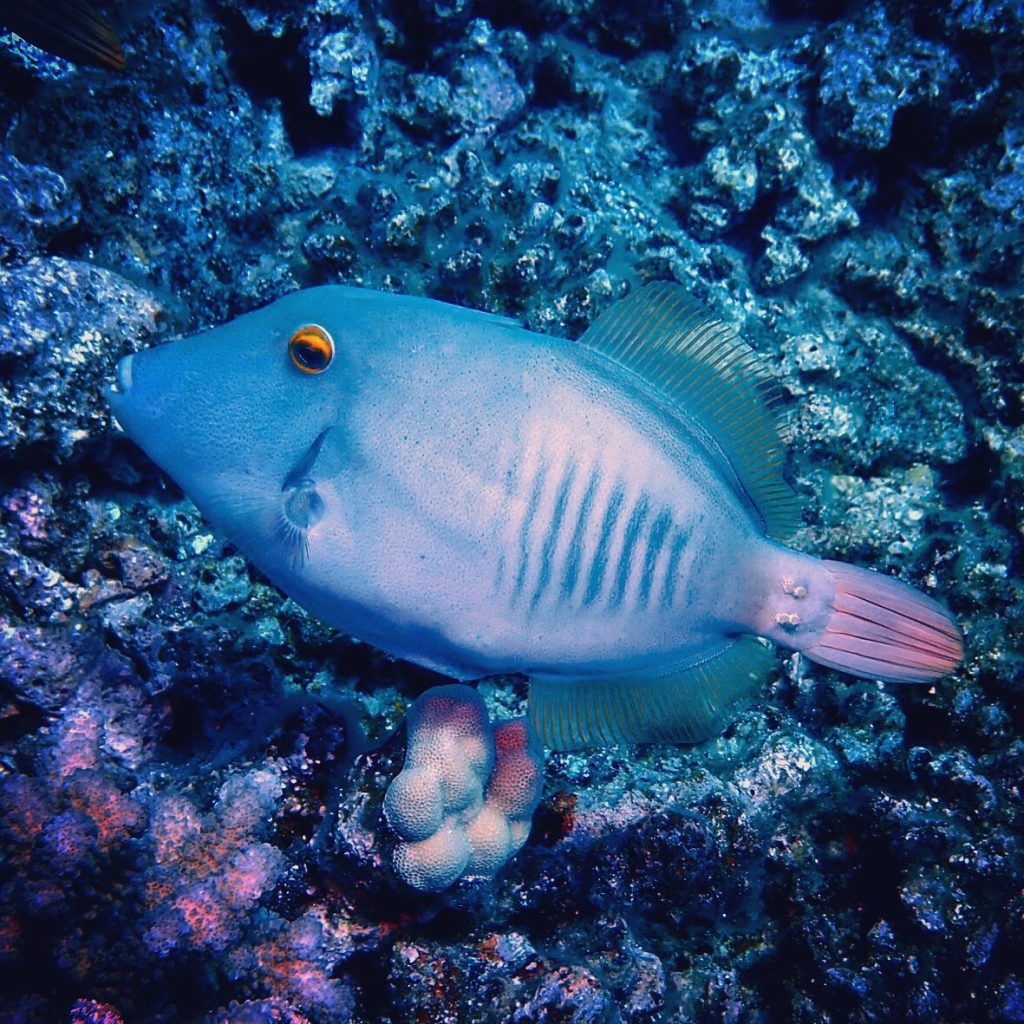
Barred Filefish (color variation)
The dive was mediocre at best, but being in the water again was all I cared about. We could have been swimming around in the open blue with nothing to look at but a few needle fish and I probably would have been just as happy.
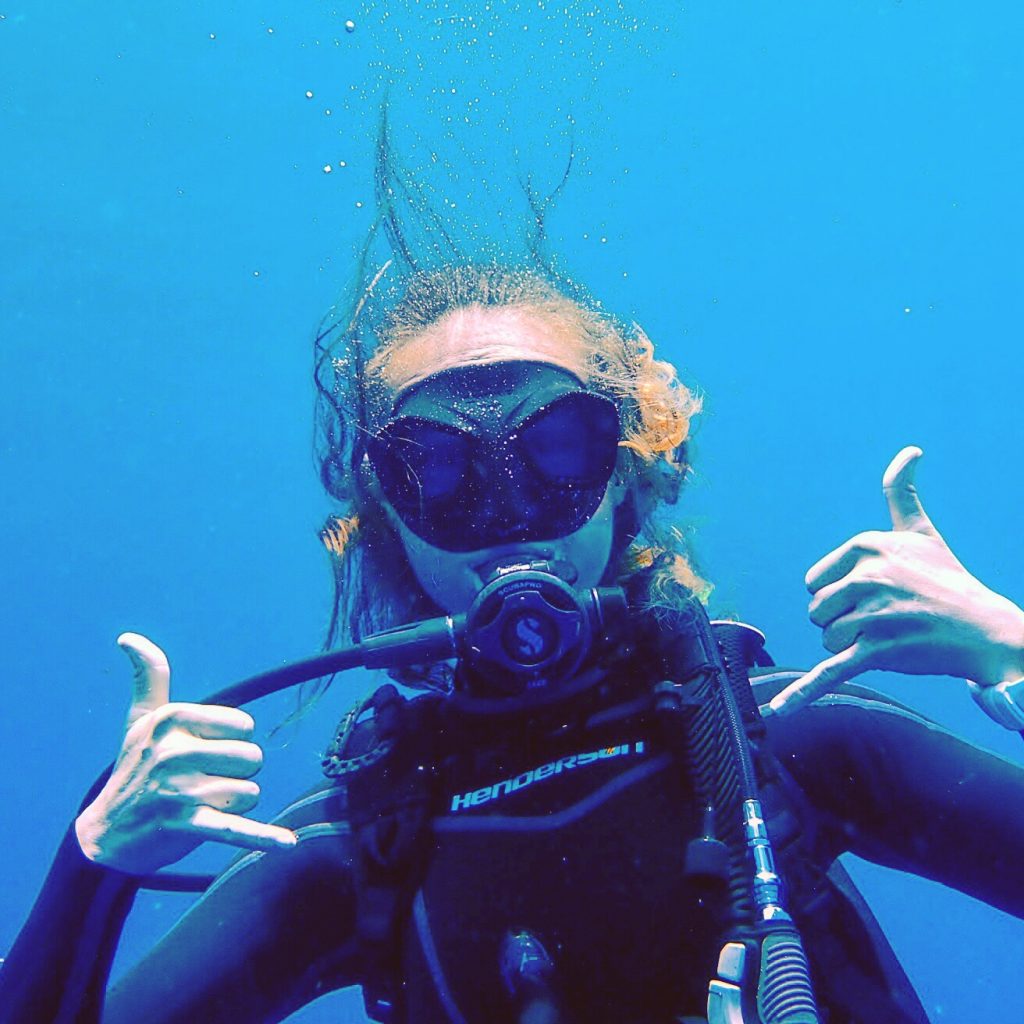
I didn’t pay attention to the time we spent at the surface which was a total rookie error. For my friends out there diving Suuntos, you need to have at least an hour on the surface or else your computer is going to be sending you into deco on your second dive. Spoiler alert.
For our second dive, Captain Jen brought us to the St. Anthony Wreck. Our divemaster briefed us on how to do a quick swim through, and Fletch and I eyed each other with concerned looks. Neither one of us had to say anything. We both knew what the other was thinking. We had a group of 8, mostly novice divers, and that was a perfect recipe for a silted-up swim-through. We agreed to just admire the outside of the wreck.
The St. Anthony sits at the bottom of 70 feet of water and is 65 feet in length. When I did my wreck course, I was promised interesting history lessons to go along with all of my future wreck diving. As such, I am always curious where they come from and try to find any information available. Like so many popular diving wrecks, the St. Anthony was sunk intentionally for divers back in 1997. Before that, it was a shrimping boat in Louisiana. After the shrimping industry collapsed, it was relocated to Hawaii to become a long-line fishing boat. Over the years, it was neglected and eventually ended up rusting away in Honolulu Harbor, destined to be brought out to deep water and made to disappear. A marine industry lobbyist who was looking to take pressure off of some of Maui’s more highly trafficked dive sites pushed for the St. Anthony to be sunk for divers, and was eventually able to raise the funds to do so.
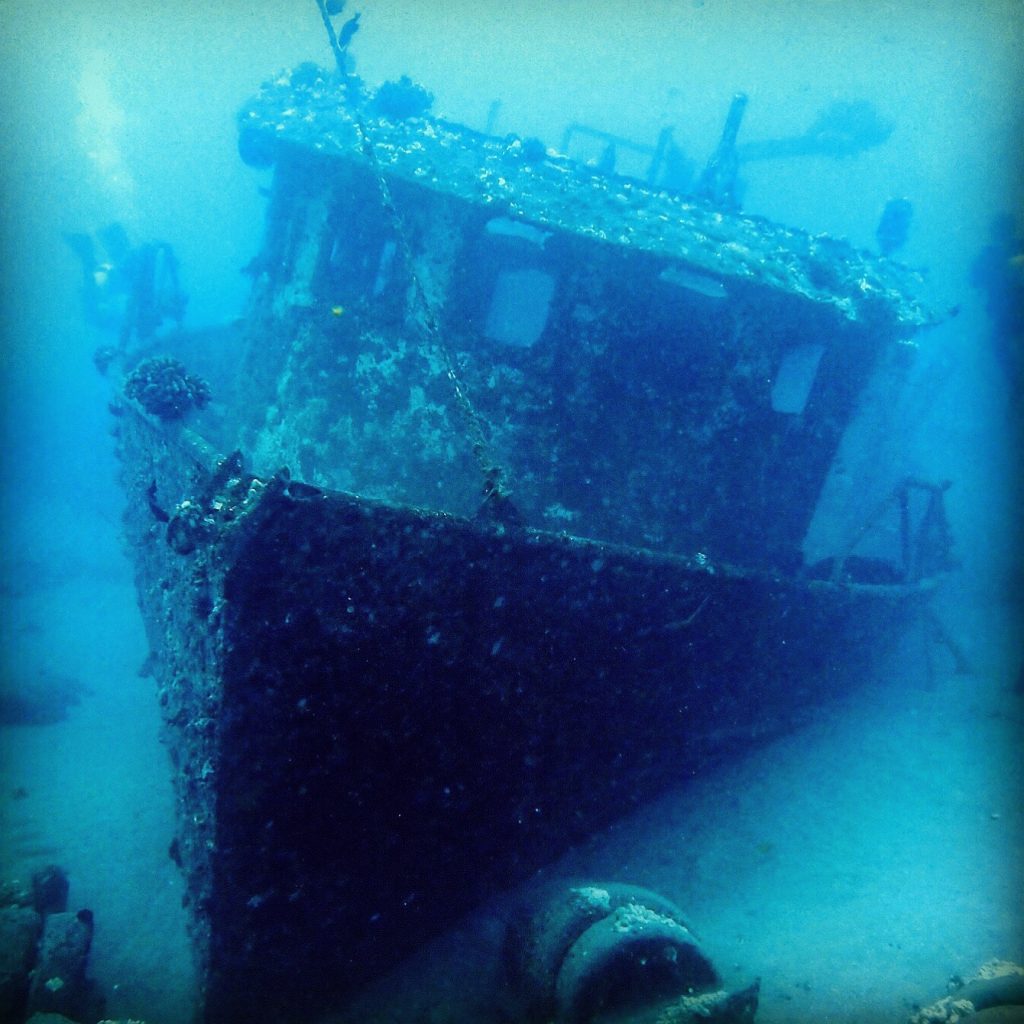
When we entered the water, our divemaster didn’t enter the wreck right away, diverting off to the side instead. Knowing that he trusted us to do our own thing, Fletch and I decided to take advantage of a leisurely swim through before the circus penetrated, kicking up all the silt as they went. (I’m cringing over that fact that I just used ‘circus’ and ‘penetrate’ in the same sentence, but it’s so bad I can’t bring myself to erase it). The pathway was open and easy, with not much to see inside. I made my way through, slowly and steadily, as any good diver would. The trick is to move as little as possible. It’s like when you have paper cut-outs for arts and crafts scattered all over the floor, so you don’t want to create a draft by opening or closing a door too quickly. Unfortunately, the rest of the group must have been excited to see the wreck, and so followed Fletch and me inside. I didn’t see this of course, looking only straight ahead to see where I was going, but as I was trying to gently will my buoyancy upwards and out the exit, I could already feel the next person bumping headfirst into my fins. Sorry, whoever that is, but you’re just going to have to keep churning back there, because I’m going to exit this thing properly, without contributing to the silt cloud that is likely already billowing behind me.
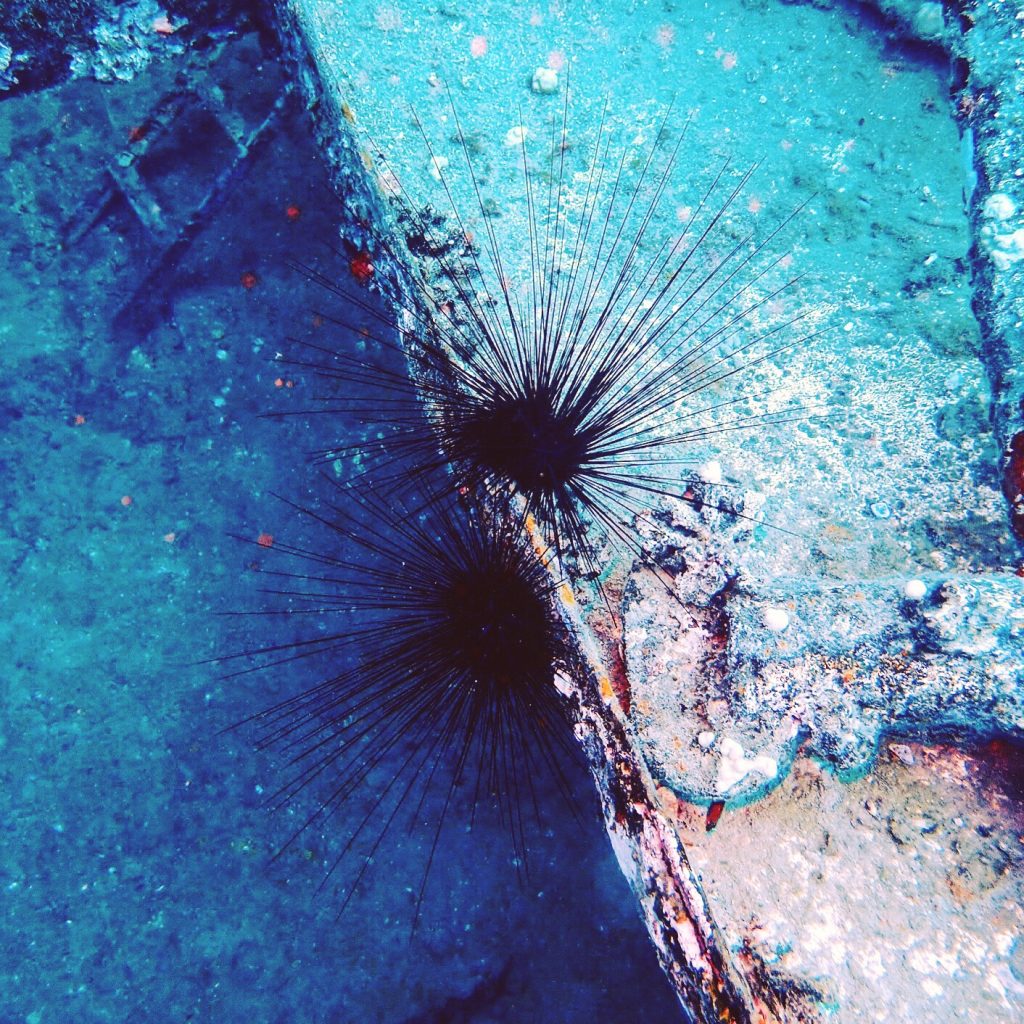
I made my way out and Fletch and I sat back to make sure the rest of the group made it out. When we thought we saw everyone, Fletch stuck his head back down into the opening just to be sure. He told me later on that sure enough, it was just a giant cloud of dust floating around in there.
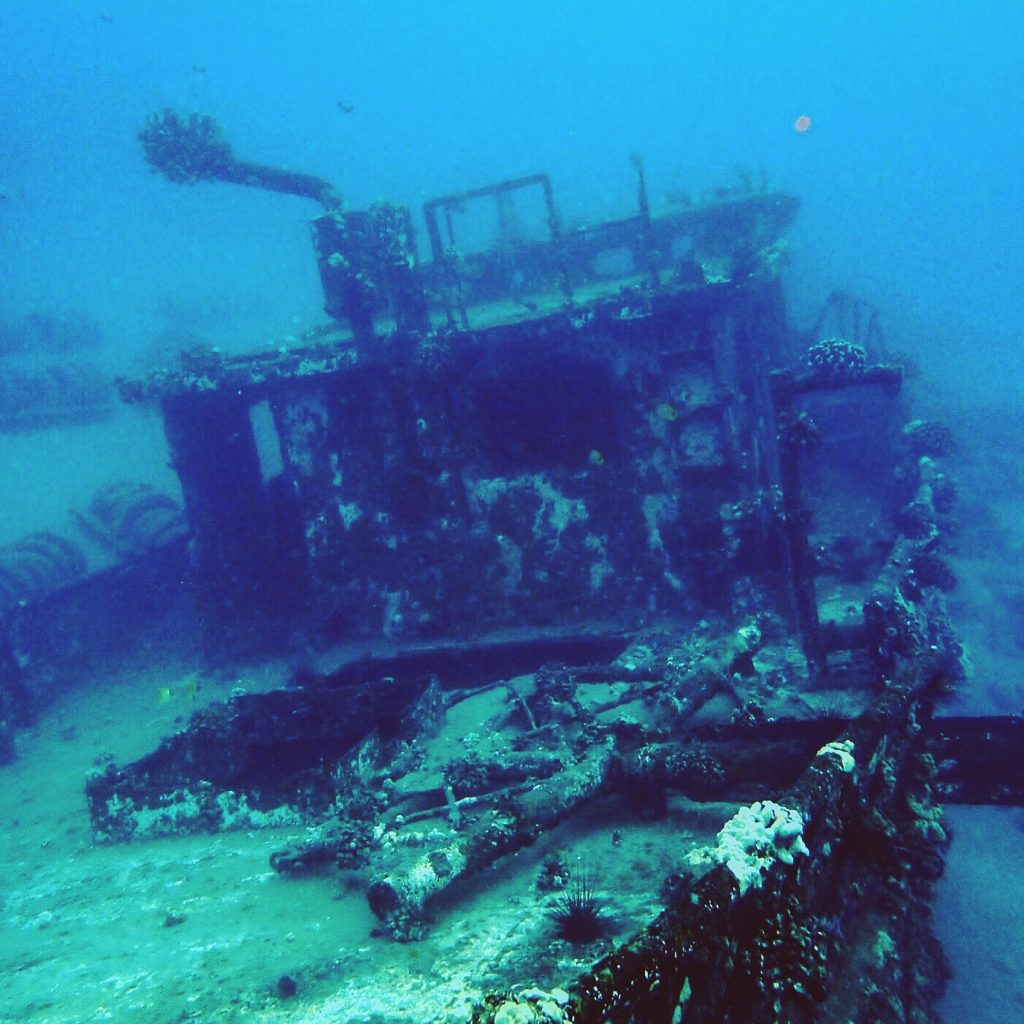
Next to the wreck there was a graveyard of old tires. Apparently someone had sunk them at one point in an attempt at making an artificial reef. Little did they realize that coral doesn’t grow on rubber. The rubber reef was home to a few schools of butterflyfish and snappers though, who hung out in the crevices just like they used to hang out in the cabbage coral patch in Fiji.
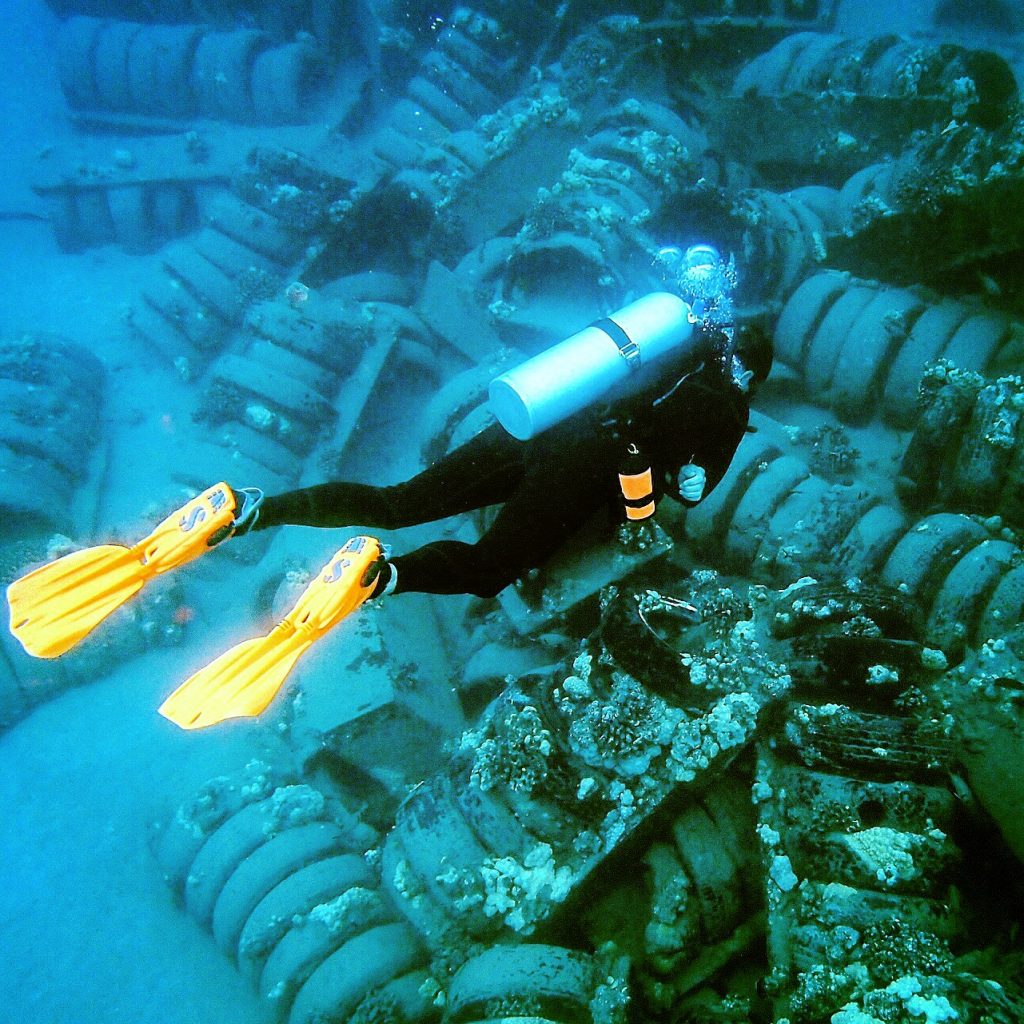
Fletch checking out the tire “reef”. 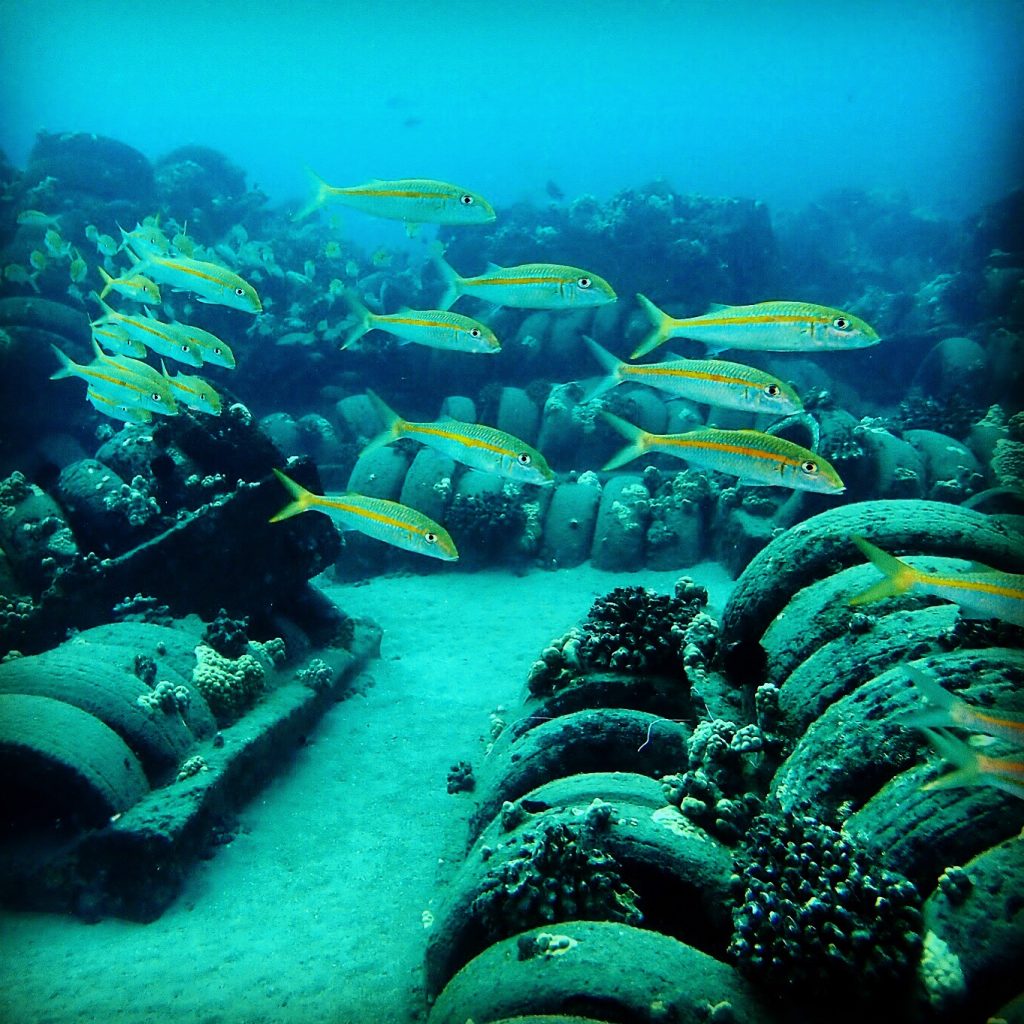
Yellowfin Goatfish 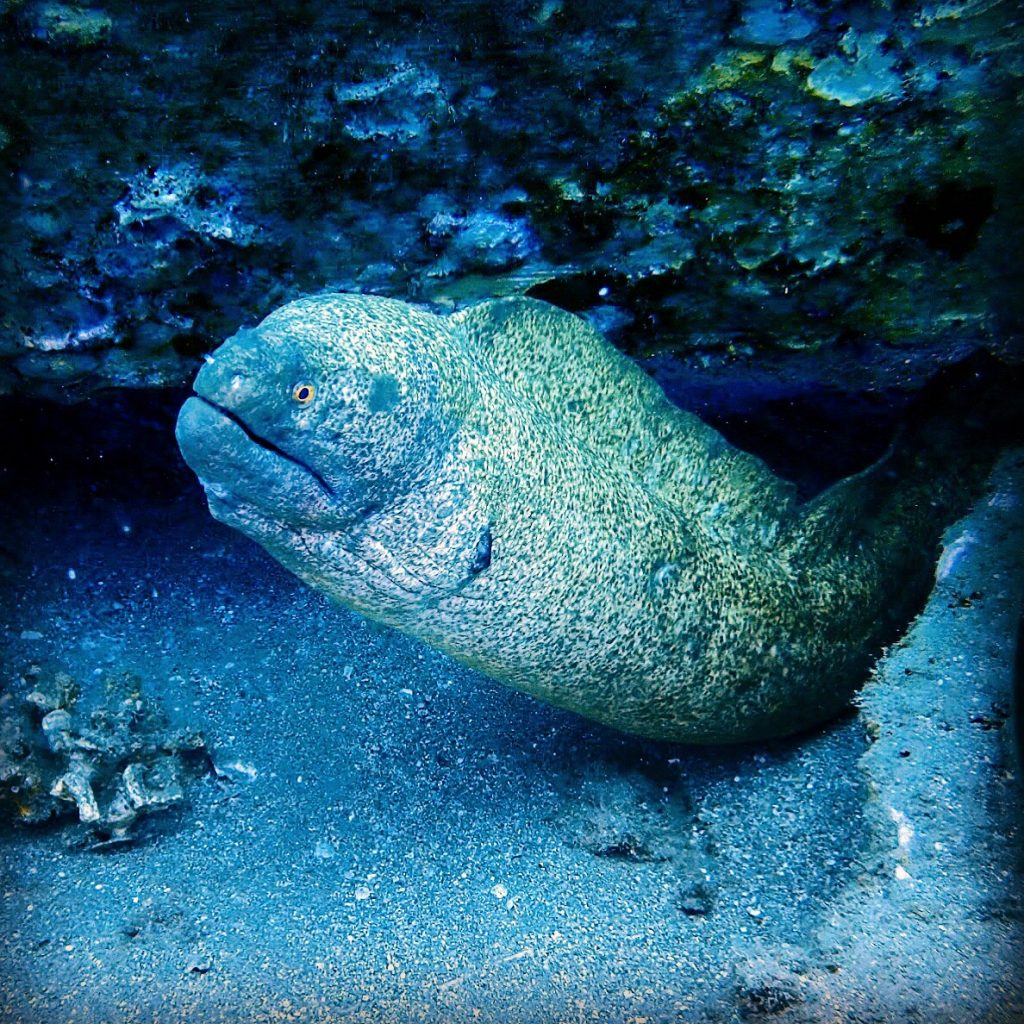
Yellowmargin Moray Eel 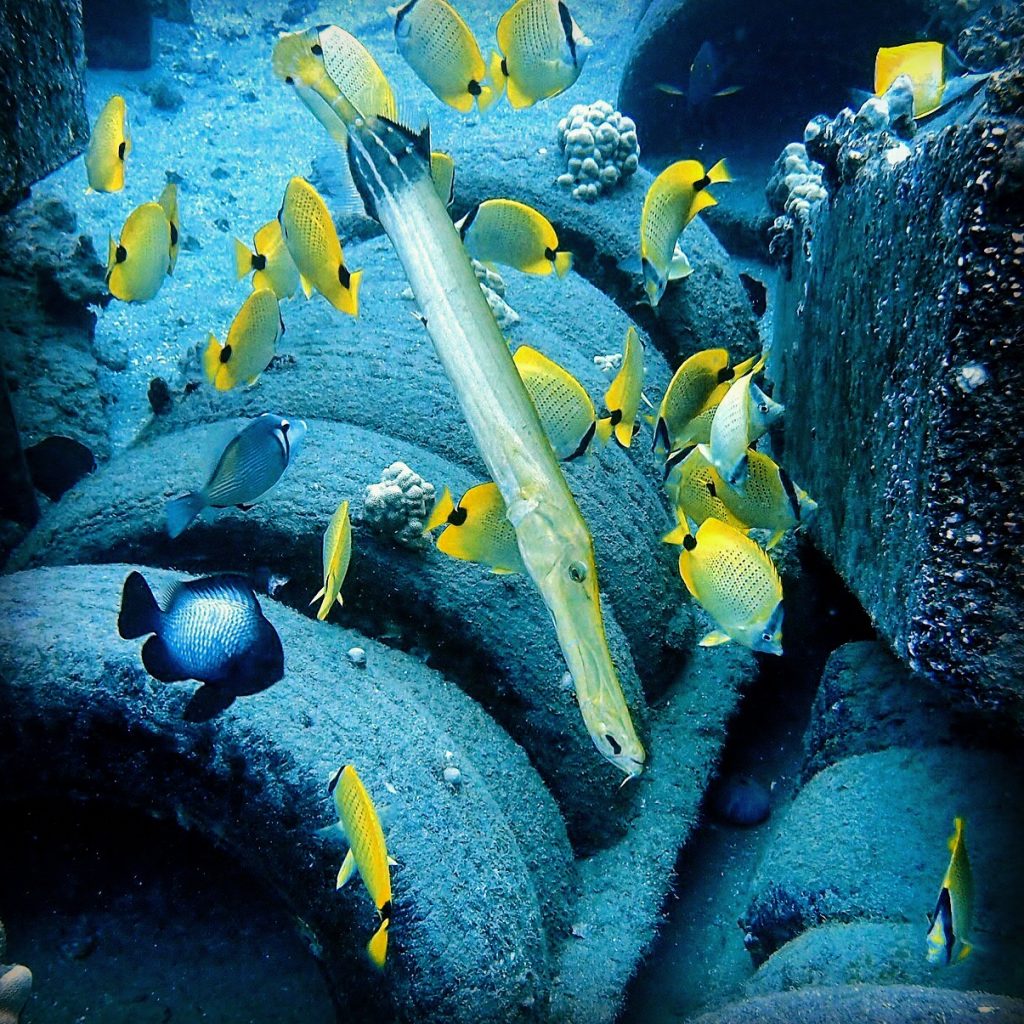
Trumpetfish and a school of Milletseed Butterflyfish. 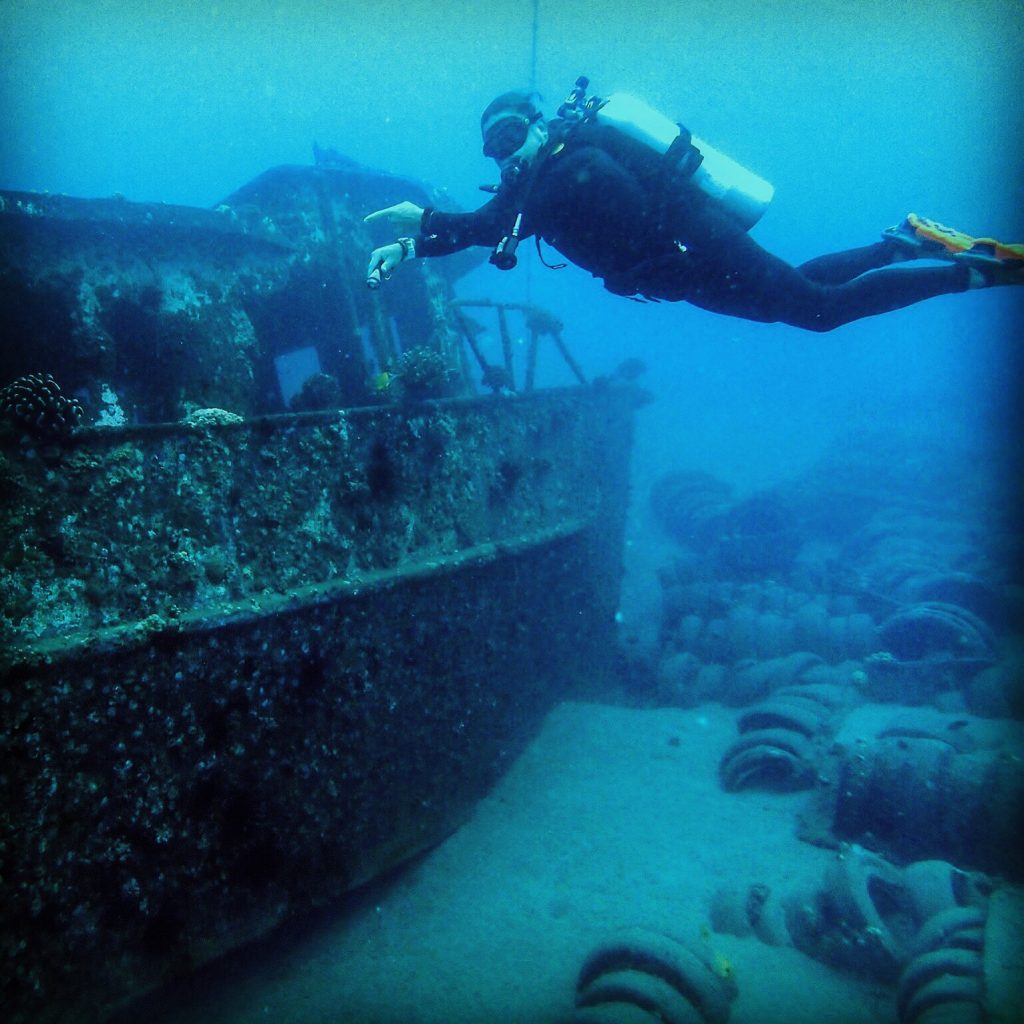
Fletch and the St. Anthony
30 minutes into the dive, both of my computers started beeping angrily at me, even though our average depth was only 46 feet. That’s Suunto for you though, always conservative to a fault, especially when you don’t pay attention to how long your surface interval is. I spent the rest of the dive hovering at the safety stop, staring down at all the novice divers still diving, and taking photos of the barnacles on the mooring buoy.
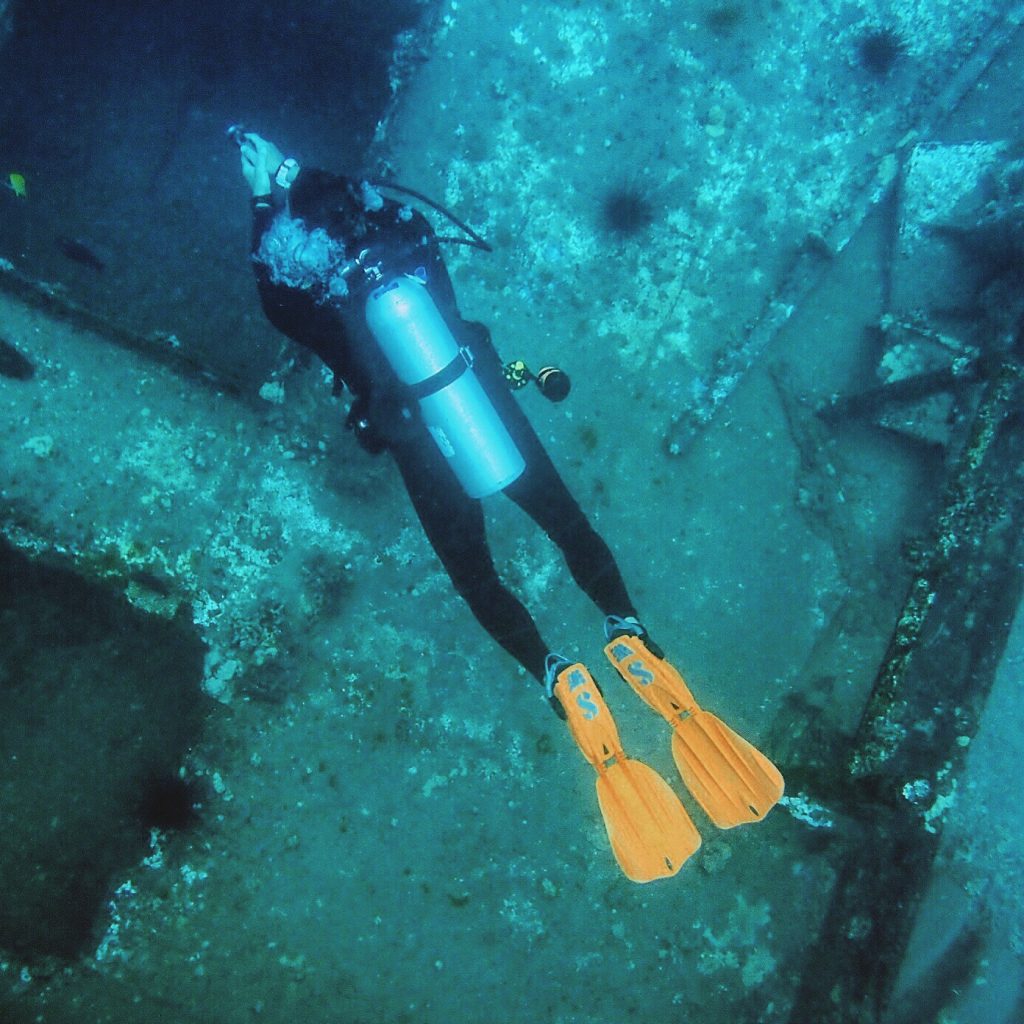
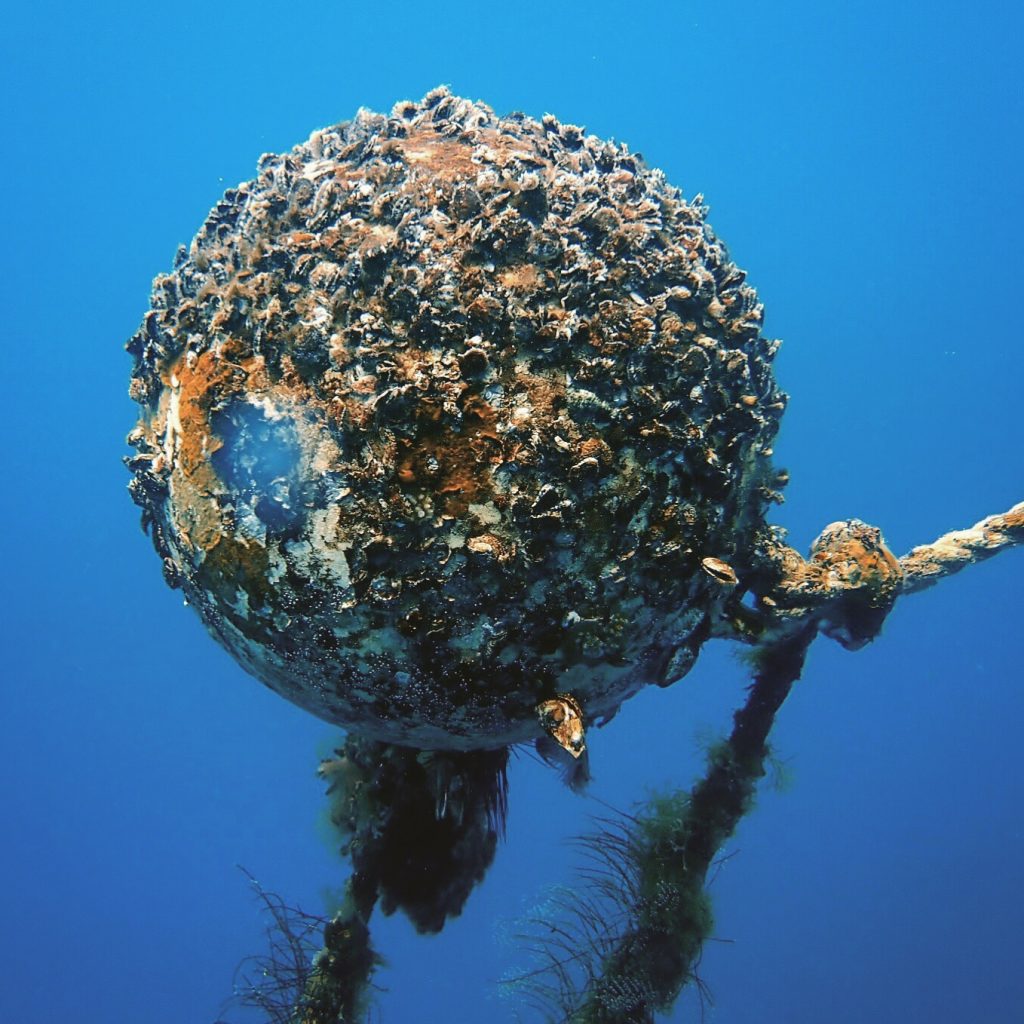
It occurred to me as I was writing this that when I do research for a diving destination, I always want to know the water temperature and what kind of exposure protection to pack. As such, maybe it would be nice to include some logistical information for any readers who are here for the informative aspects. For that reason, I’m going to start posting my dive logs at the bottom of posts pertaining to scuba diving.
Dive Logs:
- Dive Site: Reef’s End, Molokini
- Max Depth: 28.1 meters (92 feet)
- Max Time: 47 min
- Water Temperature: 27 C (81 F)
- What I Wore: Long 3mm
- Recommended Cert Level: Advanced Open Water
- Dive Site: St. Anthony Wreck
- Max Depth: 21.1 meters (69 feet)
- Max Time: 43 min
- Water Temperature: 28 C (82 F)
- What I Wore: Long 3mm
- Recommended Cert Level: Wreck Specialty



